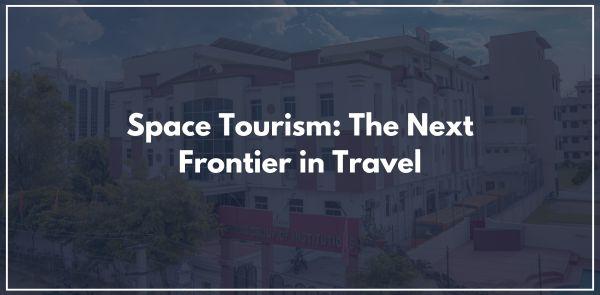
Introduction
Space tourism is no longer a distant dream; it is rapidly becoming a reality. With advancements in technology and the emergence of private space companies, the idea of traveling beyond Earth has captured the imagination of many. This article explores the concept of space tourism, its current state, potential benefits, challenges, and the role of educational institutions like the Poddar Group of Institutions in preparing future professionals for this exciting industry.
The Evolution of Space Tourism
The concept of space tourism has evolved significantly over the years. In the early days of space exploration, the idea was largely theoretical. Visionaries like Wernher von Braun proposed the concept of space hotels and vacation trips to the Moon. However, it wasn't until 2001 that the first space tourist, Dennis Tito, paid a reported $20 million to travel to the International Space Station (ISS) aboard a Russian Soyuz spacecraft. Tito's journey marked a significant milestone, demonstrating that private individuals could participate in space travel.
Current Players in the Space Tourism Industry
Several companies are at the forefront of the space tourism industry:
SpaceX
Founded by Elon Musk, SpaceX has revolutionized space travel with its reusable rocket technology. The company aims to make space travel more affordable and accessible. SpaceX's Crew Dragon spacecraft is designed to carry astronauts and tourists to the ISS and beyond.
Blue Origin
Founded by Jeff Bezos, Blue Origin focuses on suborbital space tourism. Its New Shepard rocket offers short flights that allow passengers to experience a few minutes of weightlessness and view the curvature of the Earth. Blue Origin emphasizes safety and sustainability in its operations.
Virgin Galactic
Richard Branson's Virgin Galactic is another key player in the space tourism industry. The company uses a spaceplane, VSS Unity, which is carried aloft by a mothership before being released to ascend to the edge of space. Virgin Galactic aims to provide a unique experience for tourists seeking to experience space.
The Experience of Space Tourism
Suborbital Flights
Suborbital flights are the most accessible form of space tourism. Passengers experience a brief period of weightlessness and stunning views of Earth from space. These flights typically last around 10-15 minutes, providing a taste of the space experience without the complexities of orbital travel.
Orbital Stays
For those seeking a more immersive experience, orbital stays aboard the ISS offer a unique opportunity. Tourists can spend several days in microgravity, conducting experiments and enjoying breathtaking views of Earth. However, these trips are significantly more expensive and require extensive training.
Benefits of Space Tourism
Economic Growth
The space tourism industry has the potential to drive economic growth by creating jobs and stimulating innovation. As more companies enter the market, the demand for skilled professionals in engineering, hospitality, and space science will increase.
Inspiration for Future Generations
Space tourism can inspire future generations to pursue careers in science, technology, engineering, and mathematics (STEM). By making space travel accessible, young people may be motivated to explore careers in aerospace, research, and exploration.
Advancements in Technology
The development of space tourism technologies can lead to advancements in various fields, including materials science, propulsion systems, and life support systems. These innovations may have applications beyond space travel, benefiting industries on Earth.
Challenges Facing Space Tourism
Safety Concerns
Safety is a paramount concern in the space tourism industry. The risks associated with space travel, including launch failures and exposure to radiation, must be addressed to ensure the safety of passengers. Companies must invest in rigorous testing and safety protocols.
High Costs
Currently, space tourism is an expensive endeavor, with ticket prices ranging from hundreds of thousands to millions of dollars. Making space travel more affordable will be crucial for the industry's growth and accessibility to a broader audience.
Environmental Impact
The environmental impact of space tourism is another challenge that must be considered. Rocket launches produce greenhouse gas emissions and contribute to atmospheric pollution. The industry must explore sustainable practices to minimize its ecological footprint.
The Role of Educational Institutions
Educational institutions like the Poddar Group of Institutions play a vital role in preparing the next generation of professionals for the space tourism industry. By offering programs in aerospace engineering, space science, and hospitality management, these institutions equip students with the skills needed to thrive in this emerging field.
Research and Innovation
Colleges and universities can contribute to the advancement of space tourism through research and innovation. Collaborations with industry partners can lead to breakthroughs in technology, safety, and sustainability, driving the industry forward.

